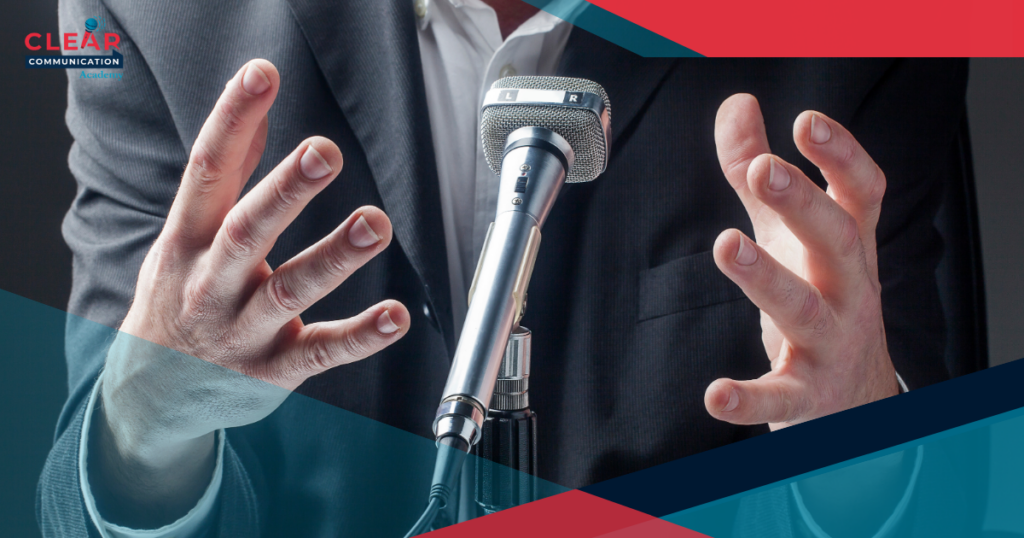
Imagine walking into a room with your shoulders back, a warm smile lighting up your face, and your hand extended confidently for a handshake. Before you say a single word, you’ve already communicated volumes. That’s the power of body language.
Experts suggest that up to 93% of communication is non-verbal, encompassing everything from facial expressions to gestures, posture, and even proximity. Think about that! Are your non-verbal cues helping or hindering your interactions?
In this article, we’ll explore body language basics and discover how non-verbal cues impact your communication!
The Power of Non-Verbal Communication
Body language is a universal language, capable of speaking louder than words. It’s the way you smile at a stranger, nod to show understanding, or lean in to express interest. Non-verbal cues can convey emotions, build trust, and even contradict what’s being said aloud.
Why Non-Verbal Communication in the Workplace Matters
The importance of body language lies in its ability to reinforce or undermine your spoken message. When your words and non-verbal signals align, they create clarity and trust. When they don’t, confusion or mistrust often follows.
Imagine delivering a speech where you enthusiastically proclaim your excitement about a project, but stand with your arms crossed and avoid eye contact. Your audience is likely to doubt your sincerity. Now picture the same speech, but this time, you use open gestures, maintain eye contact, and smile. The difference in impact is profound!
Pro Tip: Always ensure your body language mirrors the tone and intent of your words for maximum impact.
Key Elements of Body Language
Body language basics begins with understanding the key components. Each aspect serves a specific purpose and, when used effectively, can transform how others perceive you.
1. Facial Expressions
Your face is the most expressive part of your body, capable of conveying joy, surprise, anger, or sadness in an instant. Practice maintaining a neutral, approachable expression during conversations. Smiling can make you appear more friendly and open, but overdoing it might seem disingenuous.
2. Gestures
Gestures can emphasize your words or provide visual cues to your listeners. For instance, open palms often symbolize honesty and transparency, while excessive pointing can come across as aggressive. Use gestures to highlight key points, but be mindful of overusing them, as this can distract your audience.
3. Posture
Posture speaks volumes about your confidence and engagement. Standing tall with your shoulders back projects self-assurance, while slouching can signal disinterest or fatigue. Check your posture throughout the day. If you find yourself slouching, engage your core and straighten your back for an instant confidence boost.
4. Eye Contact
Eyes are often called the “windows to the soul” because they reveal so much about a person’s emotions and intentions. Maintaining eye contact signals attentiveness and sincerity, while avoiding it may suggest discomfort or dishonesty. During conversations, focus on maintaining eye contact for about 50–60% of the time to create a connection without making the other person uncomfortable.
5. Proximity
Understanding personal space is crucial to effective communication. Standing too close can feel invasive, while too much distance might come across as aloof. Be mindful of cultural differences in personal space. What feels normal in one culture might be considered too close or distant in another.
How to Use Body Language to Enhance Professional Communication
Non-verbal communication in the workplace can be the key that unlocks your professional potential. Here’s how to use it to your advantage:
- Maintain Open Posture: Sit or stand with uncrossed arms and relaxed shoulders to appear approachable and confident.
- Use Purposeful Gestures: Movements like counting on your fingers or gesturing upward for emphasis can help convey key ideas.
- Avoid Fidgeting: Nervous habits like tapping your foot or playing with a pen can distract from your message.
- Confident Entrances: A strong entrance sets the tone. Smile, stand tall, and offer a firm handshake when meeting someone new.
Pro Tip: Consider recording yourself during a practice presentation. Reviewing the footage can reveal areas where your body language needs improvement.
Reading and Interpreting Non-Verbal Cues
Master communicators don’t just project positive body language — they also know how to interpret it in others.
Recognizing Common Cues
- Resting Chin on Hand: Could signal boredom, though paired with eye contact, it might indicate deep thought.
- Frequent Nodding: May suggest agreement or impatience, depending on the context.
- Crossed Arms: Often interpreted as defensiveness, but it might also indicate the person is simply cold or comfortable.
Context Matters
When interpreting body language, context is key. A single gesture rarely tells the whole story. Instead, observe clusters of signals. For example, someone crossing their arms and avoiding eye contact while leaning away likely feels uncomfortable or disinterested.
Pro Tip: Avoid jumping to conclusions based on one gesture. Always consider the broader context.
Common Body Language Pitfalls to Avoid
Even experienced communicators can fall into common body language traps. Here’s how to avoid them:
Overusing Gestures
Too many hand movements can overwhelm your audience. Practice using gestures that are deliberate and aligned with your message.
Lack of Eye Contact
Avoiding eye contact can undermine trust. If direct eye contact feels intimidating, focus on the person’s forehead or alternate between individuals in a group.
Closed-Off Posture
Crossing your arms or hunching forward can create a barrier. Keep your posture open and welcoming, especially during collaborative discussions.
Body Language Basics in Building Relationships
Strong relationships, whether personal or professional, are built on trust—and body language is a vital part of fostering that trust. Nonverbal cues often speak louder than words, making them key to creating meaningful connections.
Techniques for Connection
Mirroring
Subtly mimicking another person’s gestures or posture can create a sense of rapport. For instance, if someone leans slightly forward while speaking, doing the same can signal your shared engagement. However, ensure this is done naturally, as an overdone effort can come across as insincere.
Warm Gestures
Using open palms, a gentle smile, and a relaxed stance conveys friendliness and approachability. These gestures create a welcoming atmosphere, encouraging others to feel comfortable and valued in your presence.
Eye Contact
Maintaining consistent (but not intense) eye contact signals attentiveness and builds trust. Look at the person speaking to show genuine interest, but avoid staring, which can feel intimidating. Shift your gaze occasionally to keep the interaction natural.
Posture Awareness
Stand or sit with an upright but relaxed posture to exude confidence and receptiveness. Avoid crossing your arms, as this can seem defensive or closed off. Instead, keep your shoulders relaxed and arms in an open position to signal that you’re approachable and engaged.
Pro Tip: When meeting someone new or having a conversation, combine verbal affirmations like “That makes sense” or “Tell me more” with intentional nonverbal cues such as maintaining eye contact, nodding, and leaning slightly forward. These actions show that you are fully present and genuinely interested in what the other person has to say, laying the foundation for a strong and trustworthy relationship.
Body Language in a Digital World
In virtual environments, non-verbal communication becomes more challenging but remains crucial.
Tips for Video Calls
- Eye Contact: Position your camera at eye level to simulate direct eye contact.
- Purposeful Gestures: Use your hands within the frame to emphasize points without overdoing it.
- Upright Posture: Sit straight to project energy and professionalism.
Pro Tip: Avoid multitasking during virtual meetings, as it’s evident when your attention is divided.
Tips for Mastering Body Language
Improving your body language is a lifelong journey that requires practice, self-awareness, and a willingness to adapt. Here’s a checklist to keep you on track:
Practice Daily
Spend a few minutes each day observing and adjusting your body language. Use mirrors to check your posture, facial expressions, and gestures during conversations or presentations. Small, consistent efforts can lead to significant improvements over time.
Seek Feedback
Ask a trusted colleague, mentor, or friend to observe your non-verbal communication and provide constructive feedback. Sometimes, others notice habits—like avoiding eye contact or fidgeting—that we overlook. Be open to their suggestions and incorporate them into your practice.
Study Others
Observe confident communicators in action, whether it’s a charismatic speaker, a skilled negotiator, or a warm and approachable friend. Pay attention to their use of gestures, tone, and posture, and consider what makes them effective. Watching TED Talks or attending networking events can provide great opportunities for learning.
Be Consistent
Your body language should align with your words to build trust and authenticity. For example, if you’re expressing excitement or gratitude, your tone and expressions should match your enthusiasm. Consistency between verbal and non-verbal communication enhances your credibility and makes your interactions more impactful.
Stay Mindful in Stressful Situations
Stress can cause unintentional negative body language, like crossing arms or avoiding eye contact. Practice grounding techniques such as deep breathing or visualizing success to maintain open, confident, and positive body language even under pressure.
Pro Tip: Keep a journal to reflect on your daily interactions. Note moments when your body language felt effective and times it may have sent unintended signals. This practice can help you identify patterns and create a roadmap for improvement.
Conclusion
Mastering body language is one of the most effective ways to improve your communication skills. From a confident posture to purposeful gestures, the non-verbal cues you send can make or break your interactions.
Remember:
- Keep your posture open and confident.
- Use gestures to enhance, not overshadow, your words.
- Make steady eye contact to foster trust.
The best part? You can start refining your body language right now. So take a deep breath, straighten your shoulders, and let your non-verbal communication speak volumes. Your journey to impactful communication begins today!



